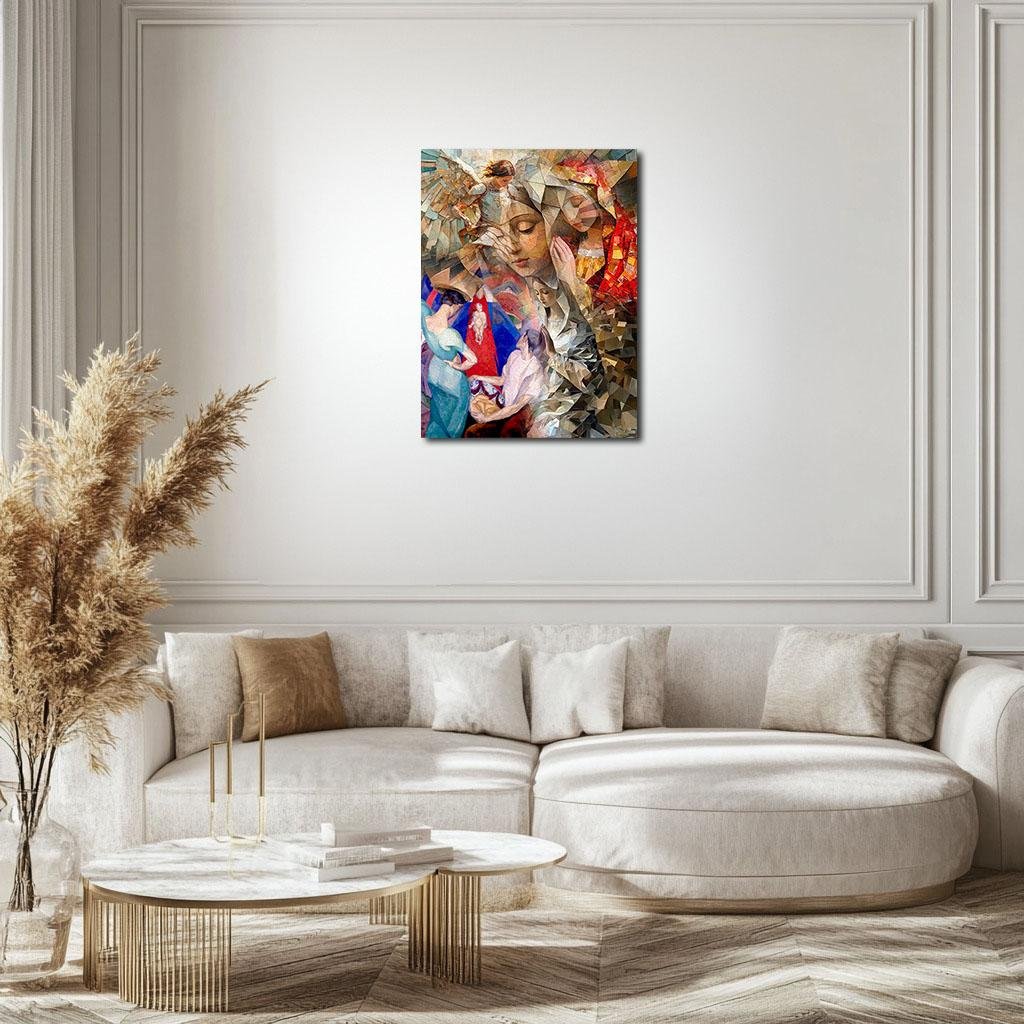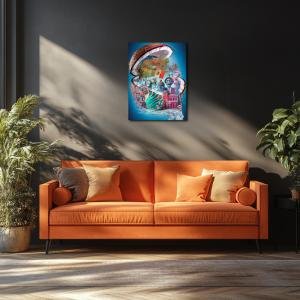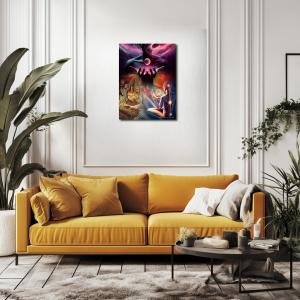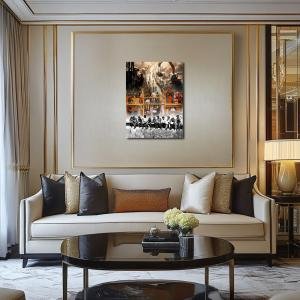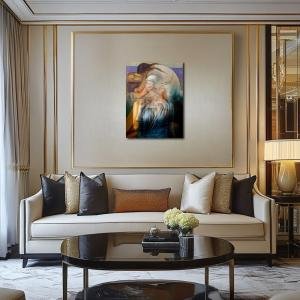The Adoration Mosaic: A Reverence of Light and Fragment
The Adoration Mosaic reimagines Diego Rivera’s The Adoration of the Virgin as a spiritual tapestry of light and geometry. Through stained-glass-like mosaics and softened figures, the Virgin, Child, and witnesses are reshaped into echoes of memory and devotion. Deep reds blaze with sacred intensity, while serene blues and golden shards flow like fragments of divine memory. This conceptual interpretation becomes less a depiction and more a state of reverence, inviting the viewer to witness not a scene — but a living prayer refracted through time.
Please see Below for Details…
Hotline Order:
Mon - Fri: 07AM - 06PM
404-872-4663
Inspired by Diego Rivera’s The Adoration of the Virgin, this reinterpretation—titled The Adoration Mosaic—seeks to unravel the reverence and intimacy of the original by reassembling it into a kaleidoscope of devotion. Here, I present a sacred convergence of mother, child, and worshippers not as a scene frozen in time, but as a visual hymn vibrating across centuries. This is a conceptual expression built upon shards—of light, iconography, belief, and emotion—crafted to echo the fragile yet enduring structure of spiritual faith.
Rivera’s foundational sense of sacred intimacy—so deeply rooted in human forms and grounded compassion—is preserved in the central trio: the Virgin, the Child, and those in their quiet awe. But in this rendering, they no longer exist within architectural or narrative boundaries. Their presence is diffused, multiplied, fractured. They are mirrored in modern madonnas, angelic figures, and abstract worshippers, each refracted through the prism of stained-glass geometry. The scene reads like a shattered cathedral window through which time flows like light.
At the center, the Virgin’s gaze has been softened into a dreamlike hush, her face assembled from cubist slivers, her expression transcendent and maternal. Her red mantle—an anchor of Rivera’s color symbology—is deconstructed into fiery tessellations that ripple through the upper right corner. That crimson, layered with threads of gold and amber, carries the dual weight of sacrifice and sanctity. It is not flat; it burns. It pulses with the warmth of divine protection and human bloodline.
Surrounding her, delicate skin tones fade into glints of alabaster and bronze, suggesting both fragility and the eternal. Each angular fragment forming her hand and cheek is not merely a brushstroke but a memory—of fresco, fresco painter, and frescoed chapel. I wanted her to feel as though she’s assembled not just from pigments, but from centuries of longing and prayer.
Above her, an angel in mid-flight is constructed from cool mosaics of aquamarine, pearl, and ivory—an ethereal force stitched into the sky by ancient hands. This palette brings serenity and ascension. The blue tones taper downward into rich sapphire folds across a kneeling woman, whose bowed head echoes that of the Virgin below. She is both worshipper and mirror, highlighting the cyclical femininity of faith.
To the left, a tableau borrowed from Rivera’s cubist influence takes form: a robed mother, a nurse, a newborn. But they are stripped of realism, hovering in a near-Byzantine stillness, made of sweeping brush arcs and sharp geometries. Their setting is not geographic—it is symbolic. These figures exist in the continuum of adoration, not in a physical nativity but in a cosmic one. This section uses deep violets and moody teal—tones I chose to express the gravity and mystery of birth. These shades resist clarity; they ask the viewer to lean in and feel rather than interpret.
Running through the bottom quadrant, golden ochres, softened ivories, and muted silver shards mimic broken mirror glass. They gather the image into a unified visual chant. The Child, less a figure than a light form now, hovers at the convergence of overlapping timelines and expressions. His divine origin isn’t made radiant by halo alone but by the surrounding devotion—he glows through reflection.
The act of building this piece was like assembling a prayer in silence. The process demanded not linear storytelling but an embrace of emotional geometry. I worked in layers of digital paint and collage, blending Renaissance warmth with modernist abstraction, hoping to replicate not what Rivera depicted, but what he invoked—humility in awe, and awe in simplicity.
In essence, The Adoration Mosaic does not depict a single moment of worship. Instead, it becomes the emotion of worship abstracted and refracted—a devotional state of being. Through fragment and light, it tells of how belief is carried, broken, and passed on. Of how reverence is felt not in full forms but in fragments, not in history alone but in living inheritance.
Add your review
Your email address will not be published. Required fields are marked *
Please login to write review!
Looks like there are no reviews yet.

